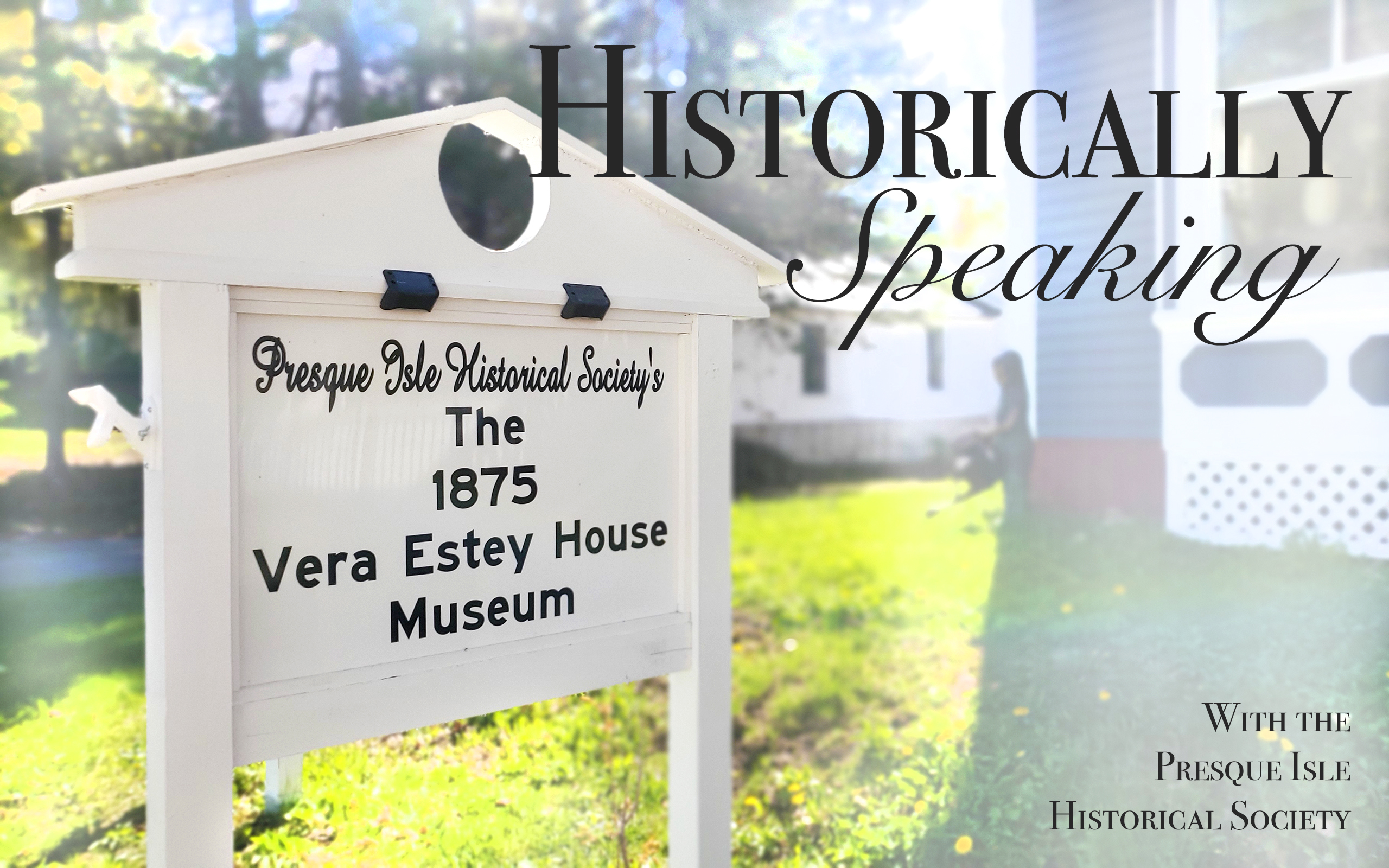When someone mentions a cemetery to you, what do you think of? And if they asked you to go walk around in one with them, what would you do? Cemeteries are actually very valuable historic resources revealing information about historic events, genealogy, religious beliefs, settlement patterns and more. The symbolism on the carved gravestones is also fascinating. These cemeteries help us better understand our past.
This time of year as we celebrate Memorial Day, I tend to spend a lot of time visiting cemeteries. Memorial Day is, of course, the national holiday to honor those who lost their lives while serving in the US Military. Memorial Day originates with Decoration Day after the Civil War.
There are many cemeteries in Presque Isle from the large garden cemetery Fairmount to the small family Bean plot on Parkhurst Siding. One of the larger cemeteries in the city is the Johnson Cemetery north of town on US Route 1.
It is not known exactly when the “old burying grounds” in Maysville was formed. Maysville was the town immediately to the north of what is now known as Presque Isle (originally founded as Fairbanks Mills). Both were established in the 1820s. Property on either side of the Maysville Burying Grounds was owned by the Johnsons. A Johnson cemetery was established to the north and west of the Maysville Burial Grounds and eventually these merged.
The Johnson Cemetery has an amazing story to tell. In addition to being the final resting place of several Civil War veterans, there is a lot of history there. Columbus Hayford (1836–1928), one such Civil War veteran, was known as “The King Farmer.” He was a member of the Grange and the Masons, served as a Presque Isle selectman (predecessor to the City Council) for 10 years, was both a Maine state senator and a Maine state representative, and served on the Board of Agriculture.
Elisha Parkhurst (1834–1930), for whom Parkhurst Siding is named, was the largest shipper of potatoes in Aroostook County for 25 years. Like Hayford, he was a member of the Grange and the Masons, and served in both the Maine Senate and Maine House. Parkhurst is also credited by the US Department of Agriculture for inventing the potato sprayer.
Eli Dennett (1835–1916) served in the Civil War and took part in the Battle of Bull Run, Antietam and Gettysburg. He was also a Selectman for two years. Dennett Hill in Mapleton is named after him. He along with Hayford and Parkhurst make up three of the 10 men who in 1915 declared themselves “The Pioneer Club” as the last surviving pioneers of this area.
Susan Duff (1814–87), wife of Daniel Duff, was the first school teacher in Aroostook County. She and three of her children all contracted diphtheria during the epidemic of 1849. She survived while her children did not.
Henry Rolfe (1818–1903), a Civil War veteran, planted the first acre of potatoes in Central Aroostook County. His house still stands today on the Caribou Road.
Charles Hussey, a farmer, was one of the two men who raised funds with which to build the first public hospital in Presque Isle.
Edward Wiggin was also a Civil War veteran, taught school, worked in the Fort Kent Customs office, served as the Postmaster of Maysville, and wrote “The History of Aroostook” which was published posthumously.
So, perhaps the next time you see an old cemetery or someone asks you to take a stroll with them through one, you will see the value in that and take a step back in time.
Artifacts and historical photographs of many of these individuals can be seen in Presque Isle Historical Society’s Maysville Museum at 165 Caribou Road, which opens for the 2023 season on Saturday, June 3. Admission to the museum is free.
Kimberly R. Smith is the secretary/treasurer of the Presque Isle Historical Society.








